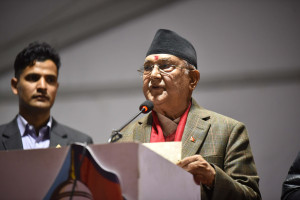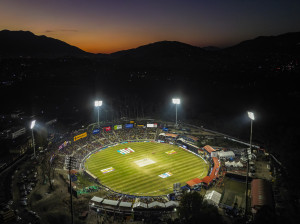Editorial
17 years—and counting
Beyond the paraphernalia of the peace lie deep wounds of the war that are yet to be healed.
When the Comprehensive Peace Agreement (CPA) was signed between the then CPN (Maoist) and the Government of Nepal, in 2006, the world was amazed by Nepal’s swift transition from conflict to peace. After all, the country had seen the deaths of an estimated 17,000 people in 10 years, and peace seemed a distant prospect. Maoists of a slightly different hue had been fighting in the jungles of Chhattisgarh and Odisha, among other states, in the “red corridor” of neighbouring India, for five decades; in Sri Lanka, the state was preparing for a coup de grace against Tamil separatist militants; Afghanistan was burning as America’s Bush administration waged an all-out war against an entire country in its pursuit of just one man. Insurrections of various kinds erupted here and there in other parts of South Asia and the entire region appeared to be in turmoil. Amidst this, the news from Kathmandu that the insurgents and the government had struck a peace deal seemed like an aberration, a mini-miracle.
From this vantage point, the peace process in Nepal has been impressive, if not outstanding. The integration of the former rebels into the national security forces went ahead without many glitches, and the assimilation of the remaining ones into Nepali society was not unpleasant either. There have, of course, been concerns of corruption in the cantonments and a lack of support system for the former rebels as they go back into society, among other issues related to the transition from conflict to peace. Despite the independent merit of these issues, they pale in front of the achievements made. But what remains an outlier in the 17 years after the signing of the peace agreement is the sluggish transitional justice process. The setting up of truth commissions to seek answers for gross violations of human rights from both warring parties would, as envisioned, provide the very basis of the peace agreement. First, it took too many years for the commissions to come up, and then came the excuses to delay the delivery of justice.
Eight years after the much-delayed establishment of the Truth and Reconciliation Commission (TRC) and the Commission for Investigation on Enforced Disappeared Persons (CIEDP), all we have to show is numbers—of the disappeared, the killed, the maimed. Seeking truth, however, is no arithmetic business. While it is important to count every individual who has been victimised, a real attempt at seeking “truth, justice and reparation for dignity”, in line with the motto of the commission for the disappeared persons, calls for genuine attempts to address their grievances. Hope for justice for the victims of gross violations of human rights is fading as evidence continues to be lost with time, perpetrators die, and victims pass away without justice or live without dignity. Beyond the paraphernalia of the peace lie deep wounds of the war that are yet to be healed. As we observe the 17th anniversary of the historic peace process, we must remember that collective amnesia of conflict does not help build a peaceful society.




 11.12°C Kathmandu
11.12°C Kathmandu














